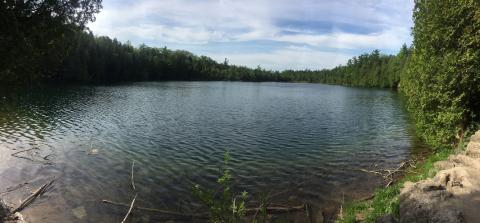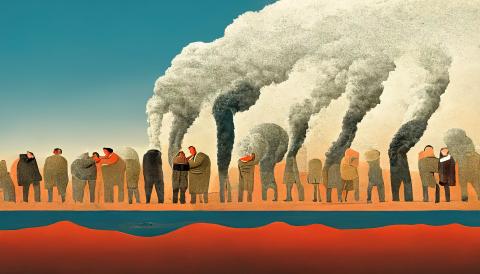A study places the beginning of the Anthropocene in 1952
The Anthropocene began around 1952, according to a study based on geological records from 137 sites around the world, published in PNAS. The term ‘Anthropocene’ describes the period in Earth's history when human activities have drastically altered the planet; in March, an international scientific body dismissed it as an official geological epoch.

Blanca Martínez - fecha Antropoceno EN
Blanca Martínez
Researcher in the geology department
Kuwae's work includes a detailed analysis of almost 400 geological and biological records, including lake sediments, corals and tree rings, from 137 geographical locations around the world, which allow us to infer human influence on the natural environment over the last 8,000 years. It is therefore an arduous, detailed and very complete work, which provides solid and conclusive results.
This study complements previous work of the same kind, which seeks to provide as concrete an age as possible for the beginning of the alteration of the planet's natural biogeochemical cycles due to human influence. In this way, the research team concludes the existence of three key moments in recent history: the second half of the 19th century (between 1855 and 1890), coinciding with the Industrial Revolution; the beginning of the 20th century (from 1909 to 1944); and the middle of the 20th century (between 1948 and 1953), at the start of the so-called ‘Great Acceleration’. The data provided also show that it was during the latter period, particularly from 1952 onwards, that the main alteration of natural cycles as a result of human activity began.
In this way, this work demonstrates the existence of a significant human footprint in the recent geological and biological record, making it clear that humans have been able to alter the natural behaviour of different environments on our planet since the middle of the last century. However, these results are not sufficient to establish the year 1952 as the beginning of a new subdivision of the geological time scale, the Anthropocene, since, as the International Commission on Stratigraphy (ICS) recently concluded, it is not possible to infer the future persistence, on a geological scale, of this evidence in the sedimentary record. But it is a further reminder of the importance of reducing the human effect on the planet in order to predict future climatic and biotic changes and adapt to them efficiently.
Alejandro Cearreta - fecha Antropoceno EN
Alejandro Cearreta
Paleontologist at the University of the Basque Country UPV/EHU, director of the geology department and member of the former Anthropocene Working Group
The term ‘Anthropocene’ was proposed a few years ago as a new geological interval that highlights the transformative changes in the earth's surface caused by human activity. It quickly entered the collective imagination as a synonym for environmental impact, climate change and ecological crisis on a global scale. Although it has been pointed out on numerous occasions that the Anthropocene does not represent the earliest geological evidence of human activity, it is the result of rapid population growth, expansion of the global economy, intensive use of energy and natural resources, and industrialisation. The combined impact of these factors became, from the mid-20th century, a global and almost synchronous phenomenon, known as the ‘Great Acceleration’.
The Anthropocene Working Group (AWG) was established in 2009 to assess the potential of this concept as a new and final interval on the Geological Time Scale. After years of publications, discussions and voting, the AWG concluded in 2023 that the Anthropocene has a sound scientific basis. However, last March, the International Union of Geological Sciences did not agree to formalise it as a unit of geological time.
In this new study, Kuwae and his collaborators have set out to determine a globally valid date for the onset of this human transformation of the Earth system, based on a comprehensive analysis of numerous geological markers in 137 records from around the globe that reflect with high chronological accuracy the last 7,700 years of human influence on the environment. These markers include man-made radionuclides from atomic testing in the atmosphere, persistent organic and inorganic pollutants, microplastics and fossil remains of invasive species transported, either voluntarily or accidentally, to different ecosystems on all continents.
The authors conclude that, although humanity began to significantly and progressively modify the earth's surface with the onset of agricultural societies thousands of years ago in the Neolithic, the European colonisation of the Americas in the 15th century or the Industrial Revolution in the 18th century, the unprecedented increase in the global human footprint began in 1952. This year coincides with the beginning of the Great Acceleration, a period in which the natural processes and cycles of the Earth system were rapidly and intensely transformed. In line with the AWG, this study notes that humans have become a geological and planetary force since the mid-20th century, leaving numerous and varied anthropogenic footprints in geological strata across the planet.
Michinobu Kuwae et al.
- Research article
- Peer reviewed



